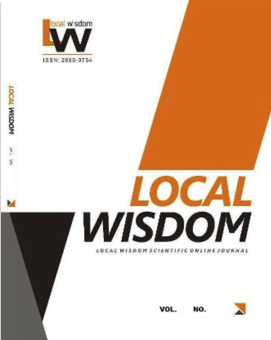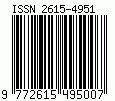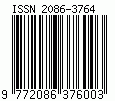Study of Architecture and Cultural Landscape of the Dhawe Tribe, East Nusa Tenggara
DOI:
https://doi.org/10.26905/lw.v14i2.6226Keywords:
traditional architecture, cultural landscape, preservation, Dhawe tribeAbstract
The Dhawe Tribe cultural area, better known as the Ola Dhawe Traditional Village, is currently the center of attention of the government and the local community because the site has changed the activity pattern of the Dhawe Tribe community both in terms of culture and in terms of culture and landscape. These changes occur in community activities that can damage the environment, such as logging activities around customary forest areas, converting customary land into residential areas, natural exploitation around the Dhawe Tribe area, and replacing traditional house structure materials from raw into modern materials. The changes that occur are feared to impact the preservation of the landscape and culture of the Dhawe Tribe community. Therefore, it is necessary to conduct a study on human interaction with the landscape, which is now called the cultural landscape, as the primary material for sustainable development and efforts to preserve the various values. This study aims to identify the architectural characteristics and cultural landscapes of the Dhawe Tribe and determine the public's perception of its conservation efforts. Primary data was obtained using focus group discussions, while the analysis method was carried out in a descriptive-qualitative manner and continued with quantitative analysis. The results and discussion obtained can be developed on recommendations for preserving the architecture and cultural landscape of the Dhawe Tribe. The conclusion is that efforts to identify architecture and cultural landscapes and public understanding of culture are needed as conservation efforts.Downloads
References
Creswell, J. W. (2014). Research design : qualitative, quantitative, and mixed methods approaches. New Delhi: SAGE Publications.
Creswell, J. W., & Poth, C. N. (2017). Qualitative Inquiry and research design: Choosing among Five Approaches: Sage Publications.
Dwi, & Antariksa. (2005). Studi Karakteristik Pola Permukiman di Kecamatan Labang Madura. Jurnal ASPI, 4(2).
Gamo, E. (2014). Perkawinan Suku Dhawe Kabupaten Nagekeo Nusa Tenggara Timur Menurut Hukum Adat dan Undang-Undang Nomor 1 Tahun 1974 Tentang Perkawinan. (Bachelor), Universitas Kanjuruhan Malang, Malang.
Ginzarly, M., Pereira Roders, A., & Teller, J. (2019). Mapping historic urban landscapevalues through social media. Journal of Cultural Heritage, 36.
Hakim, R. (2012). Komponen Perancangan Arsitektur Lanskap. Jakarta: PT. Bumi Aksara.
Iswanto, H. H., Giriwati, N. S. S., & Wikantiyoso, R. (2020). Typology and Morphology of Traditional House of Sumbersari Village Udanawu Blitar District. Local Wisdom: Jurnal Ilmiah Kajian Kearifan Lokal, 12(2).
Koentjaraningrat. (2012). Pengantar Ilmu Antropologi. Jakarta: PT. Rineka Cipta.
Kuntari, T. (2007). Qualitative research (qualitative research). Elearning Education Stase Public Health Clinic. Retrieved from http://fk.uii.ac.id/upload/klinik/ elearning / SMEs / researchqualitative-fkuii-titik.pdf.
No, F. F. L., & Servatius, R. (2020). NEGARA VERSUS MASYARAKAT ADAT: Studi tentang Resistensi Masyarakat Adat Dhawe atas Keputusan Pemerintah Kabupaten Nagekeo tentang Alih Fungsi Lahan Mabay Kiri. Warta Governare: Jurnal Ilmu Pemerintahan, 1(1).
Nurisjah, S., & Pramukanto, Q. (2011). Perencanaan Kawasan untuk Pelestarian Lanskap dan Taman Sejarah. Bogor: Departemen Arsitektur Lanskap Fakultas Pertanian Institut Pertanian Bogor.
Paramita, A., & Kristiana, L. (2013). Teknik Focus Group Discussion dalam Penelitian Kualitatif (Focus Group Discussion Technique in Qualitative Research). . Buletin Penelitian Sistem Kesehatan, 16.
Rushton, H., Silcock, D., Rogers, J., & Schnabel, M. A. (2018). The Tangible and Intangible: Interpreting Modern Architectural Heritage in Virtual Realities. Paper presented at the the Tangible - Intangible Heritage(S) - Design, Social And Cultural Critiques On The Past, Present And The Future.
Santoso, D. K., & Wikantyoso, R. (2018). Faktor Penyebab Perubahan Morfologi Desa Ngadas, Poncokusumo, Kabupaten Malang. Local Wisdom Scientific Online Journal, 10(2).
Setyabudi, I., Santoso, D. K., & Albina, K. (2021). “Gawaiâ€: Cultural Activities in the Shroud of Jangkang Bokidoh Dayak Tribe Traditional Architecture in Balai Sebut Village. . Local Wisdom: Jurnal Ilmiah Kajian Kearifan Lokal, 13(1).
Simonds, J. O., & Starke, B. W. (2006). Landscape Architecture: A Manual of Environmental Planning and Design. New York: The McGraw-Hill Companies.
Simonds, J. O., & Starke., B. W. (2014). Landscape Architecture. New York: McGraw-Hill Companies.
Sugiyono. (2012). Metode Penelitian Kuantitatif Kualitatif dan R&D. Bandung: Alfabeta.
Sumarni, D. (2015). Dinamika Konflik Agraria Dalam Masyarakat Adat (Studi di Kalangan Suku Dhawe dan Suku Mbay, Kabupaten Nagekeo, Flores, Nusa Tenggara Timur). (Doctoral), University of Muhammadiyah Malang, Malang.
Wahyudi, D. S., & Wikantiyoso, R. (2021). Limbungan Local Wisdom and Conservation of Vernacular Architecture East Lombok Sasak. Local Wisdom: Jurnal Ilmiah Kajian Kearifan Lokal, 13(2), 165-176.












